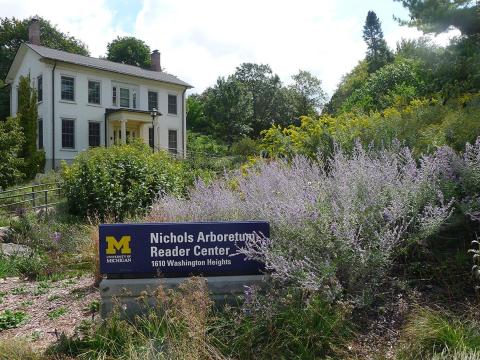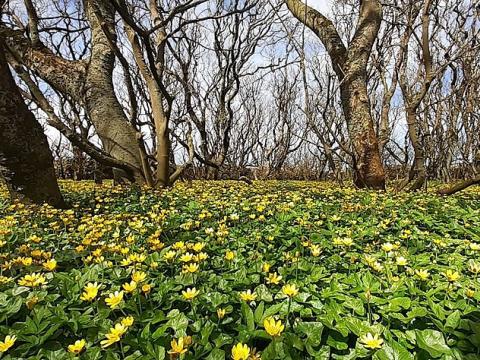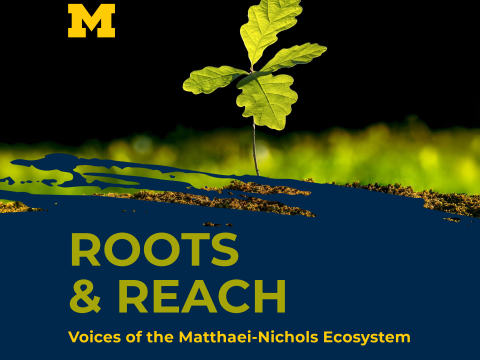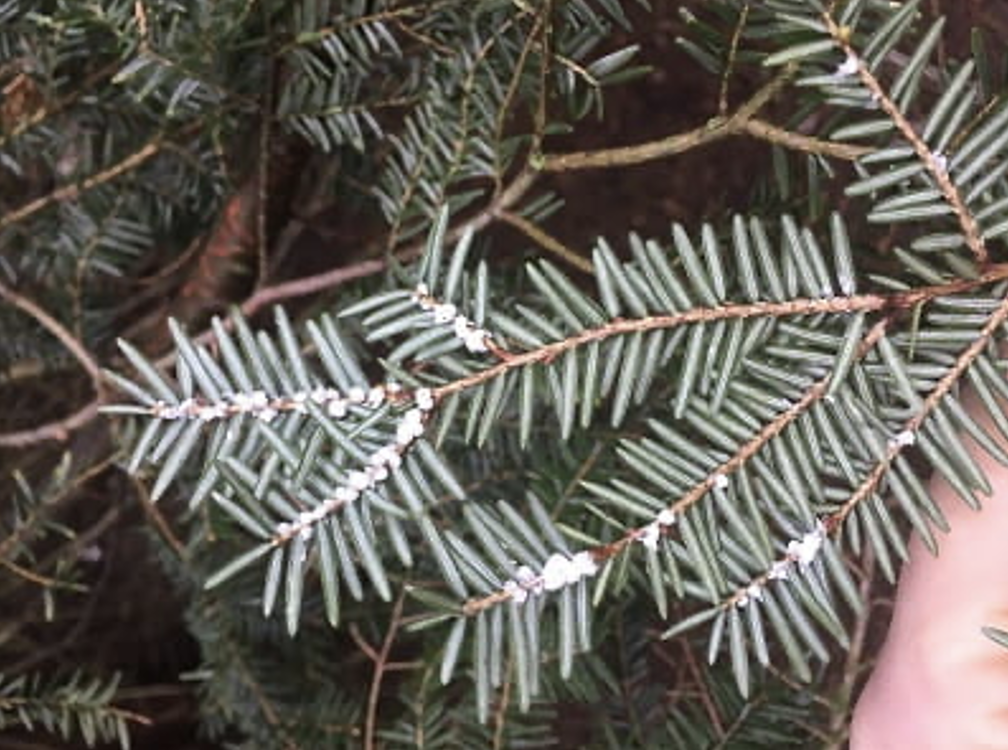
Hemlock woolly adelgid egg sacs on the underside of a hemlock tree. Source: Michigan.gov.
What is hemlock woolly adelgid (HWA)?
Hemlock woolly adelgids (HWAs) are sap-sucking bugs related to aphids and mealybugs and use their straw-like mouths to eat the sap of coniferous hemlock trees. HWA is an invasive species introduced to the eastern United States from Japan and is native to China, Nepal, Taiwan, Japan, South Korea’s Ulleung Island, and the western United States.
Why is hemlock woolly adelgid (HWA) a problem?
In their native range, HWA numbers are controlled by predators and plant defenses that have co-evolved with the adelgid. Those natural checks on HWA populations do not exist in the eastern United States and the Midwest, so HWA populations can grow to large infestations that suck North American hemlock trees dry. Hemlocks sickened by HWA infestations grow discolored, dry out, and lose their needles. Severe infestations can kill branches or entire trees within 4-15 years.
HWA have decimated hemlock forests in eastern North America since their introduction in the 1900s, killing up to 95% of all hemlock trees in some parts of the eastern United States. The loss of hemlock trees can have disastrous consequences for organisms that depend on the cool, shady coves that hemlocks create. Once hemlock forests are gone, they are usually replaced by other hardwood trees like black birch, red maple, and oak, but no other trees in the eastern United States re-create the unique environment inside hemlock forests. Preventing any further spread of HWA is critical to protect Michigan’s estimated 170 million hemlock trees.
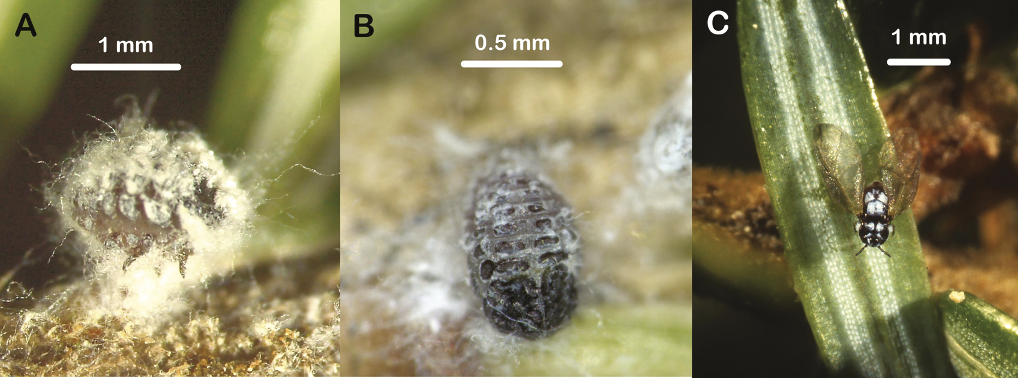
What does hemlock woolly adelgid (HWA) look like?
HWA has two forms, one asexual and another sexual. Asexual adults are the main concern for Michigan trees and look like white cotton balls around 1/20th of an inch long (1.5 millimeters). The “cotton” is actually a waxy substance excreted by the adults, which look like black circles. The young look like reddish-brown ovals. Asexual HWA are typically found at the base of hemlock needles, where they feed. Their egg sacs also resemble cotton balls and are between 1/16th and 1/4th of an inch in diameter (1.5 and 6.35 millimeters). The eggs inside look like minuscule amber grains.
The sexual form of HWA resembles a small fly or miniature cicada with an average length of around one quarter of an inch (one millimeter). They have plump, dark-brown bodies and transparent wings.
Other insects and tree diseases can be confused with asexual HWA. The State of Michigan has provided a flier to help you differentiate HWA from other common look-alikes.
How does hemlock woolly adelgid (HWA) spread?
The asexual adelgid morph cannot move very far on their own and spread from tree to tree when blown on the wind or by hitching a ride on wildlife, people, and equipment. They can also be spread when infested branches are improperly disposed or on shipments of infested ornamental trees.
HWAs are most mobile as newly hatched nymphs (also called “crawlers”). During this stage of their lives, HWA nymphs search for places on a hemlock branch to settle and feed. HWAs have two generations of crawlers each year, once in the spring and another in the summer, and the times of year when crawlers hatch are when HWAs are easiest to spread.
In eastern North America, asexual HWA lay their eggs in February, and these eggs hatch crawlers between early March and mid April. This spring generation will remain crawlers until they become adults in June. Some variable proportion of this generation will become more wingless, asexual adelgids, which continue the reproductive cycle in North America when they lay eggs that hatch into another generation of crawlers between June and July. The summer generation will then settle on a hemlock branch and go into an inactive state until they continue their development again in the autumn. The cycle repeats once this summer generation lays their eggs in February.
The remainder of the spring generation that did not reproduce asexually become winged, sexual adults. These individuals leave hemlock, flying in search of their primary host plant, tiger tail spruce (Picea torano) to finish their sexual reproductive cycle. However, tiger tail spruce does not grow in North America, so the winged forms cannot sexually reproduce here. There is no documentation of winged HWA establishing new populations in North America.
Below is a diagram summarizing the HWA life cycle and the times of year when crawlers are active.
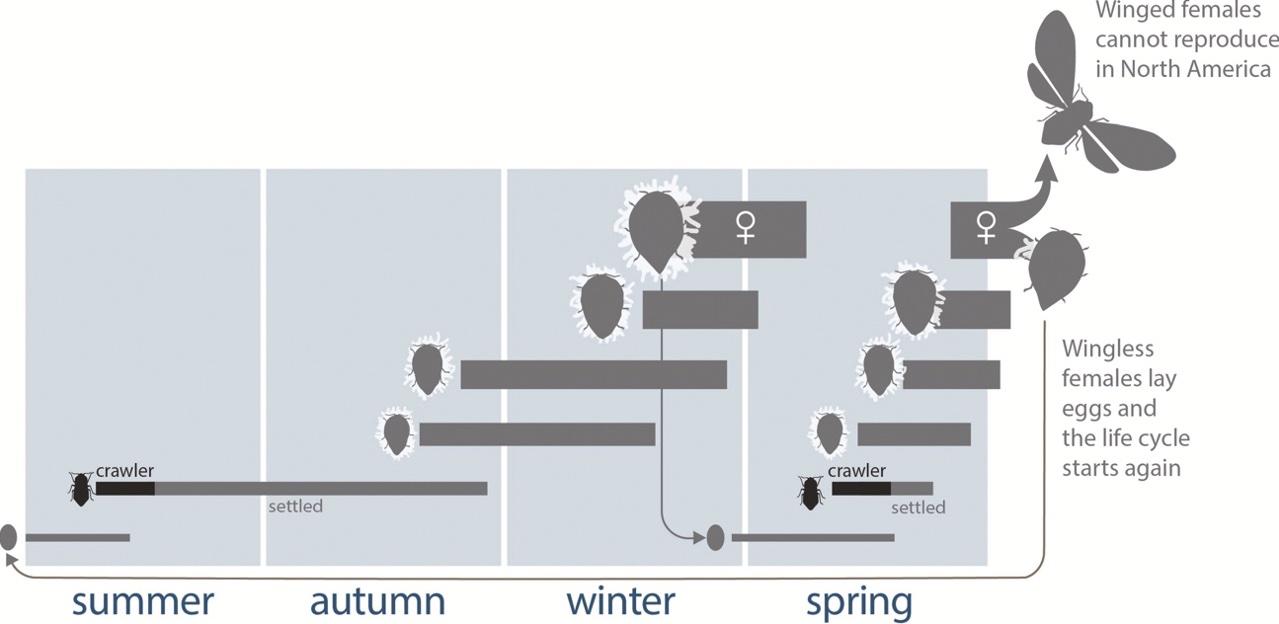
Which trees should I worry about?
HWA feeds exclusively on hemlock trees in North America. While HWA can feed on most hemlock species, the major hemlock species at risk in the eastern United States are eastern hemlock (Tsuga canadensis) and Carolina hemlock (Tsuga caroliniana) because of their low resistance.
While spruce trees are important to the HWA life cycle in Asia, there is no documentation of HWA successfully breeding or feeding on spruce trees in North America.
No other species of trees are at risk.
Should I look for hemlock woolly adelgid (HWA) on my property or natural spaces?
It is important to be mindful of HWA and be a look-out against potential infestations on your property. Any sightings of HWA should be reported following the below guidelines, and property owners should take appropriate actions if an HWA infestation occurs on their land. Treating HWA on private property can help prevent spread to sensitive, hemlock-dominated forests.
However, we do not advise anyone to actively search for HWA during the bugs’ active period in the spring and summer. Well-intentioned but inexperienced searching through hemlock can spread HWA and make the situation worse. The best time to check for HWA on your own property is during the winter, when the bugs are settled and exuding wax, according to the Michigan Invasive Species Program.
What should I do if I find hemlock woolly adelgid (HWA) in Michigan?
The state has provided some guidelines on how to report hemlock woolly adelgid:
DO NOT collect samples of the infested tree or insect. This can facilitate further spread of the adelgid.
Take pictures of the signs and symptoms and record the location. If you have a smart phone, you can use your map applications to find and record your exact geographic coordinates. Try to avoid touching infected trees while collecting photos.
Report the sighting to the Michigan Department of Agriculture and Rural Development by telephone (1-800-292-3939) or email ([email protected])
Report the infestation through the Midwest Invasive Species Information Network at this link.
How can I treat and control hemlock woolly adelgid (HWA)?
If you find an HWA infestation on your property, contact your local arborist or tree care specialist for help treating trees and properly disposing of infected material. Certified arborists can be found through the International Society of Arboriculture webpage.
The first step is to be entirely sure that you have HWA, rather than a common look-alike. Local experts can also you identify HWA and ensure that you safely and effectively apply chemical treatments following state regulations.
The state provides some recommendations on how to treat HWA here, which involves application of insecticides to the ground around the base of the tree. Take care to correctly apply insecticide in the recommended amounts to avoid damaging non-target organisms and polluting water ways. Consulting a certified arborist for guidance is the best approach.
References
Benton, E.P., et al. (2017). Risk assessment of imidacloprid use in forest settings on the aquatic macroinvertebrate community. Environmental Toxicology and Chemistry, 36(11), doi: https://doi.org/10.1002/etc.3887
**Note that the above study found that applying imidacloprid to HWA infested hemlock stands according to US EPA restrictions did not cause negative effects on forest streams’ aquatic macroinvertebrate community structures
Chowdhury, S. (2002, November 18). Hemlock Woolly Adelgid (Adelges tsugae). Columbia University Introduced Species Summary Project. Retrieved May 23, 2023 from http://www.columbia.edu/itc/cerc/danoff-burg/invasion_bio/inv_spp_summ/…
Cornell University. HWA Phenology Project. New York State Hemlock Initiative. Retrieved May 23, 2023 from https://blogs.cornell.edu/nyshemlockinitiative/community-science/phenol…
Ellison, A.M., et al. (2018). The Past, Present, and Future of the Hemlock Woolly Adelgid (Adelges tsugae) and Its Ecological Interactions with Eastern Hemlock (Tsuga canadensis) Forests. Insects, 9(4), 172, doi: https://doi.org/10.3390/insects9040172
Foreman, J. Michigan Invasive Species Program. (2022, November 20). Time to check trees for hemlock woolly adelgid. Michigan Invasive Species. Retrieved May 25, 2023 from https://www.michigan.gov/invasives/news/2022/11/30/time-to-check-trees-…
**This government webpage recommends property owners to look for HWA on their own property, but only outside the active periods in winter.
**They also recommend looking for an arborist certified with the international society of arboriculture for help with treatment.
Havill, N.P., et al. (2016). Biology and Control of Hemlock Woolly Adelgid. United States Department of Agriculture. https://www.fs.usda.gov/foresthealth/technology/pdfs/HWA-FHTET-2014-05…
Kantola, T., et al. (2019). Hemlock woolly adelgid niche models from the invasive eastern North American range with projections to native ranges and future climates. iForest. 12(2), 149-159. doi: https://doi.org/10.3832/ifor2883-012
Limbu, S., et al. (2018). Hemlock Woolly Adelgid (Hemiptera: Adelgidae): A Non-Native Pest of Hemlocks in Eastern North America, Journal of Integrated Pest Management, 9(1), doi: https://doi.org/10.1093/jipm/pmy018
State of Michigan. Invasive Species: Hemlock Woolly Adelgid. Michigan.gov. Retrieved May 23, 2023 from https://www.michigan.gov/invasives/id-report/insects/hemlock-woolly-ade….
University of Massachusetts Amherst. Hemlock Woolly Adelgid. UMass Extension Landscape, Nurser and Urban Forestry Program. Retrieved May 23, 2023 from https://ag.umass.edu/landscape/fact-sheets/hemlock-woolly-adelgid
